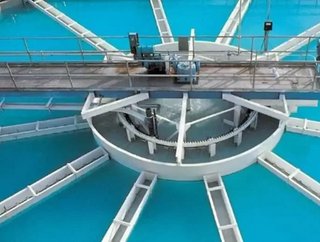Waste to Energy: An Emerging Trend

The Chambers Creek Regional Wastewater Facility in Pierce County, Wash. represents an emerging trend in the renewable energy market: transforming waste into energy. Wastewater treatment plants (WWTPs) are increasingly recognized as community resources for electricity, fertilizer, and heat, as waste to energy projects become commonplace in a sustainable economy.
A national leader in renewable energy and water/wastewater construction, Mortenson Construction is handling the expansion of the Chambers Creek Regional Wastewater Facility to increase its production of digested methane gas, which is one of the most effective and efficient ways for new or upgraded WWTPs to generate energy for surrounding communities.
The expansion adds two anaerobic digesters (for a total of five) and new digester gas-fueled steam boilers to heat the plant — thereby substantially reducing the reliance on external energy sources. The energy produced at Chambers Creek will be used to heat the plant year round and create 40 dry tons of fertilizer a week.
"We strongly believe that the transformation of waste into energy is a huge opportunity that will transform the renewable energy market and have a positive impact on communities," said Jim Yowan, Vice President, Mortenson Construction. "Wastewater is a continuous source of energy that will only increase over time. Many of the technologies which are needed to transform waste to energy exist today. Now is the time to tap into this underutilized resource."
According to the Water Environment Research Foundation, wastewater contains up to ten times the energy needed to treat it — providing a network of distributed, decentralized energy sources which are already constructed and piped.
SEE OTHER TOP STORIES IN THE ENERGY DIGITAL CONTENT NETWORK
Did the 2012 Olympics Win the Gold in Sustainability?
Ancient Passive Cooling Designs Provide Insight
Read More in Energy Digital's September Issue
WWTPs are currently responsible for approximately 1.5-percent of total U.S. energy consumption. For some municipalities, this translates to 30 to 40-percent of the total electricity bill. Since the need for wastewater treatment will only increase with population growth, closing the energy loop is rapidly becoming a primary focus of many municipalities.
Some newer WWTPs are even net energy-positive, producing enough power through a combination of microbial activity, efficiency improvements, and mechanical modifications to offset the energy needed to operate. For example, a WWTP in Sheboygan, Wis. produces more energy than it needs to operate through a series of biogas-fueled micro-turbines and the implementation of a co-digestion program.
WWTPs can be sources of hydropower, capturing and redistributing the energy produced as water circulates throughout a plant. Some cities currently utilize the heat in wastewater much like a geothermal heat pump, resulting in billions of bulk gallons that are cool in the summer and warm in the winter.
Expansion of the Chambers Creek Regional Wastewater Facility is scheduled to be complete in the spring of 2016.
SOURCE Mortenson Construction
DOWNLOAD THE ENERGY DIGITAL IPAD APP






